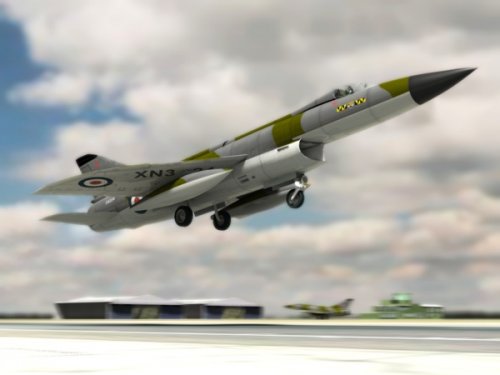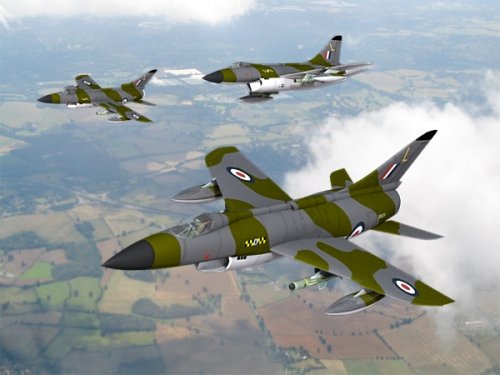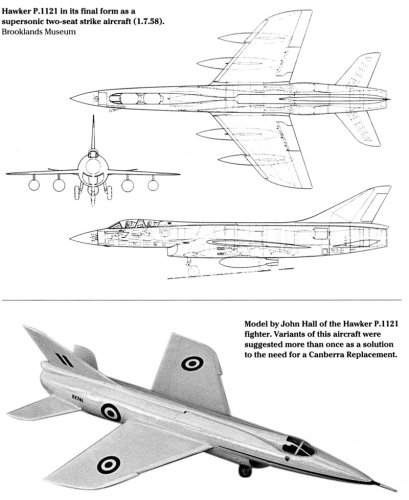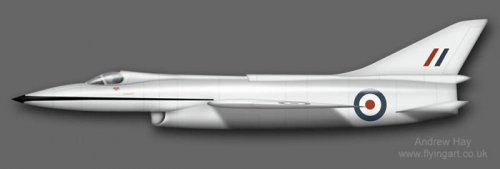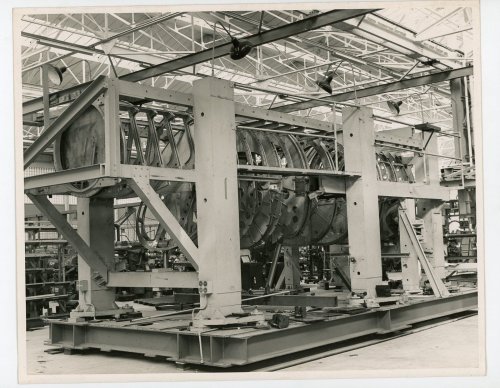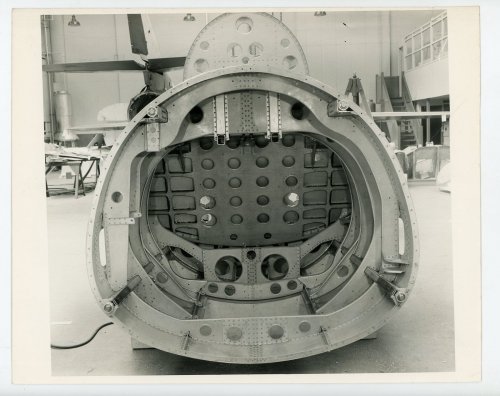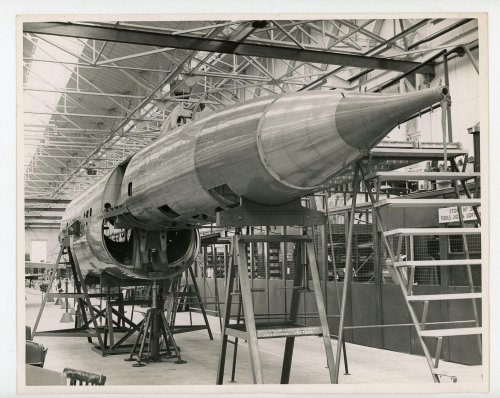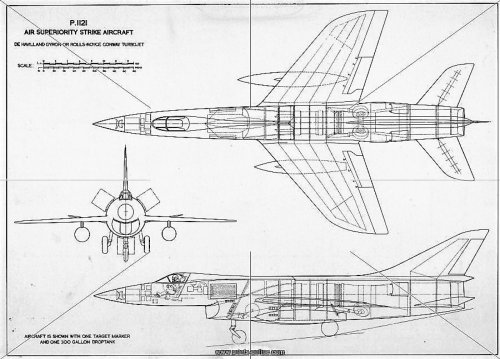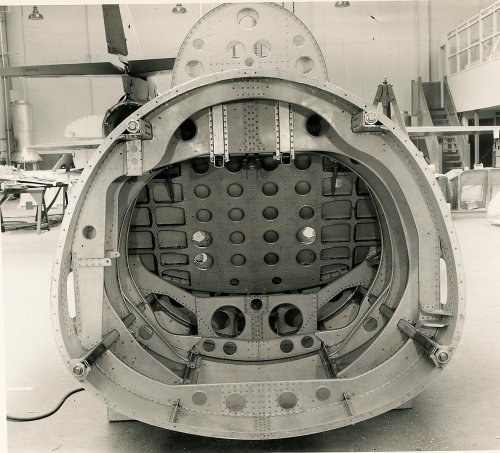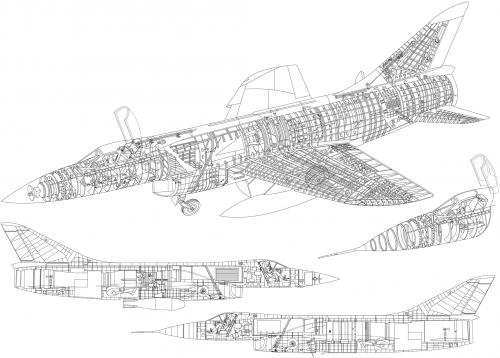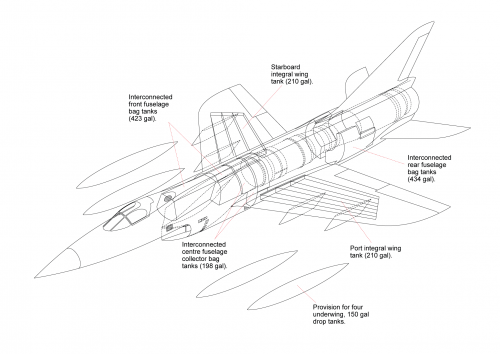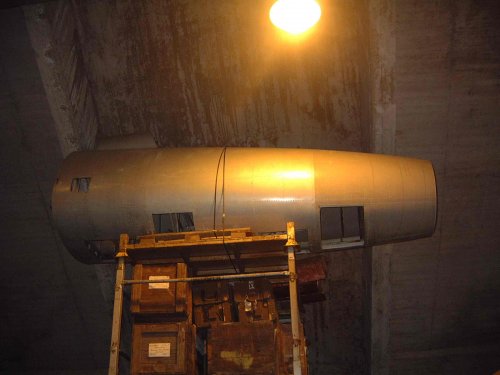Fuel Systems
Total internal fuel capacity of P.1121 was 1,500 Imperial gallons (P.1103 was just 1,100), carried in lightweight nylon bag tanks housed within light-alloy structural bays. These were divided into five main groups:
1. Forward fuselage, comprising one 265gal and one 158gal tanks mounted behind the cockpit and above the intake duct.
2. Centre fuselage, one 64 and two 67 gallon tanks plus two 12 gallon recuperators above and around the intake duct.
3. Rear fuselage, two 217 gallon tanks around the jet pipe.
4. Each wing, two integral tanks, each containing 210 gallons.
The centre fuselage group served as collector tanks for the whole system, all other tanks feeding to the engine via this group. There was provision for up to 900 gallons of additional fuel to be carried on the four underwing pylons, the inboard pair being stressed to carry either 300 or 150 gallon tanks, and the outer pair only the smaller tank. The first prototype had no provision for underwing stores as no electrical wiring or plumbing for fuel was fitted. For the strike role, the tactical nuclear weapon was to be carried on a specially-modified pylon at the port inboard wing station only, with fuel tanks on the other three pylons. The system was pressurised to 8psi using compressor bleed-air to transfer fuel, as well as to suppress boiling at high altitude. Selectors and a flow-proportioner automatically controlled transfer to ensure lateral balance and minimum movement of the centre of gravity. Transfer sequence for external fuel was unusual in that the fuel from the inboard tanks was used first, followed by that in the outboard tanks, this being the reverse of normal practice. Internal sequence was the front and rear tanks, then wing tanks and finally the centre fuselage collector group. Barrie Hygate recalled that during bombing trials on the Hunter, the aircraft was at times flown with empty inboard pylons, with two 100-gallon tanks fitted to the outer ones. The aft C.G. position produced when these were full made longitudinal control and stability a little 'twitchy', but was easily controllable with experience, and it was barely noticeable when they were empty.
The engine was fed via a pair of booster pumps driven by bleed-air, which also fed the reheat high-pressure pump in the rear fuselage. A small electrically-driven pump was fitted in the collector tanks to provide pressure for starting and for any conditions where the bleed-air was insufficient to run the main booster pumps at their correct pressure. The two 12 gallon recuperators were capable of supplying the engine for 18 seconds at maximum dry thrust, or 7 seconds at full reheat, under negative 'g' conditions.
A single pressure-refuelling point was provided in the left main wheel bay capable of accepting a flow-rate of 300 gallons/minute at 50 psi. Pressure relief valves in each tank group allowed venting during refuelling, and dumped any excess fuel in the event of the delivery valves failing to shut-off. The refuelling point could also be used for de-fuelling at a lower rate via the engine delivery pipe and a manually operated de-fuelling cock.
Fuel levels were registered on two cockpit gauges, one showing fuel in the front and rear fuselage and wing tanks and the other collector tank fuel. Fuel carried in the underwing drop tanks was not gauged, 'doll's-eye' indicators showing tanks empty. Flow meters were fitted in the engine and reheat delivery pipes, each having its own cockpit gauge, the engine delivery pipe gauge also indicating total fuel used (in lbs), for both engine and reheat.

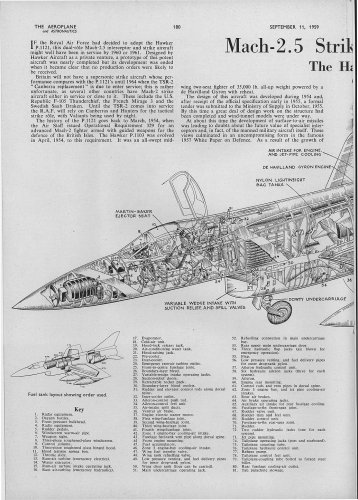
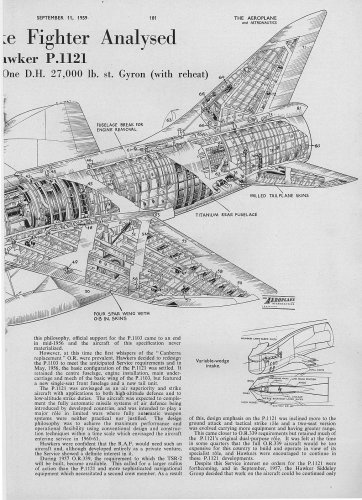
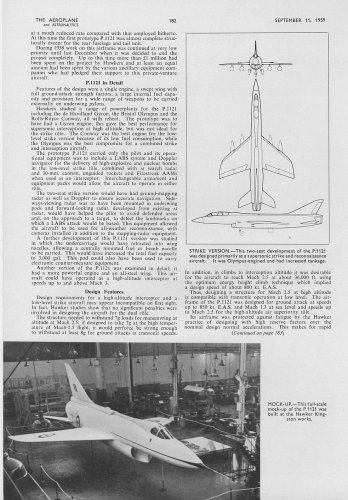
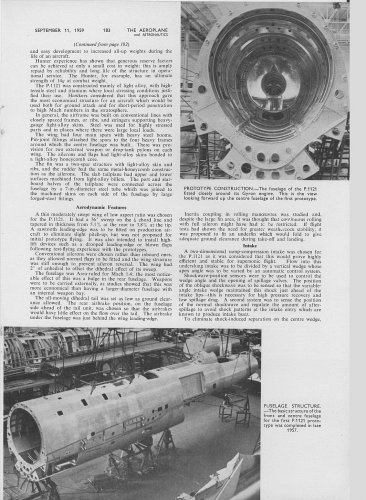
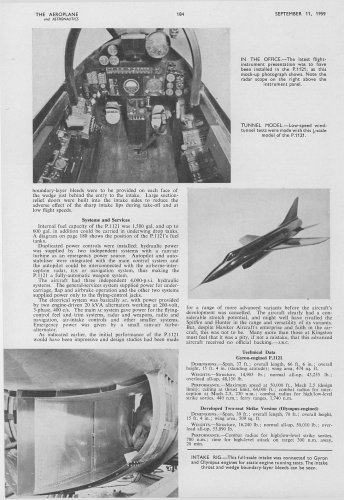

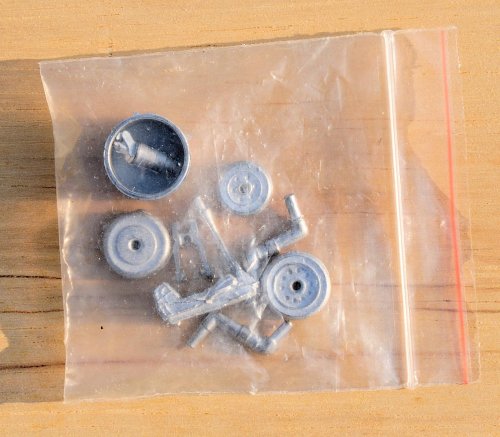
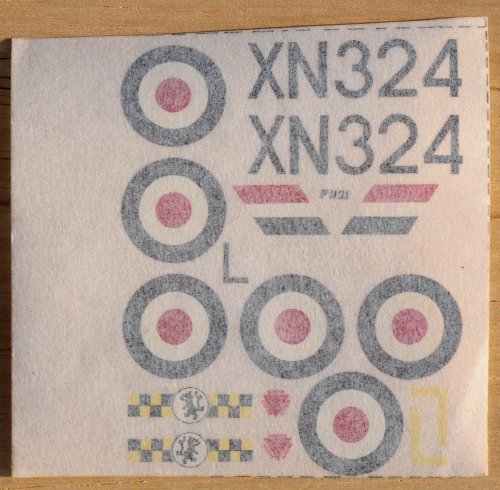
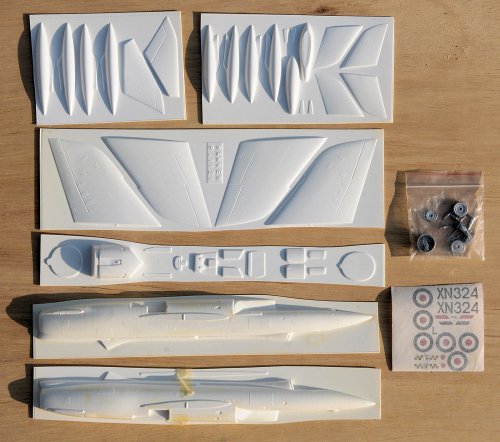
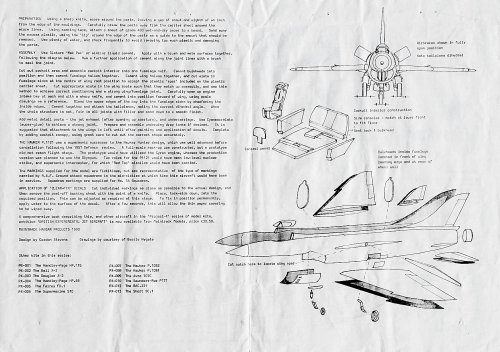
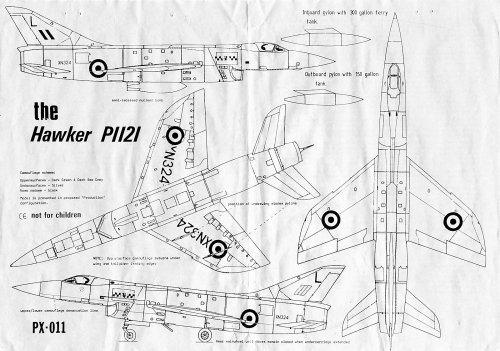
![Hawker P.1121 R J Way[4].JPG](/data/attachments/95/95643-8e1dcfa49fa03dbf9aa9141a95641acf.jpg)

